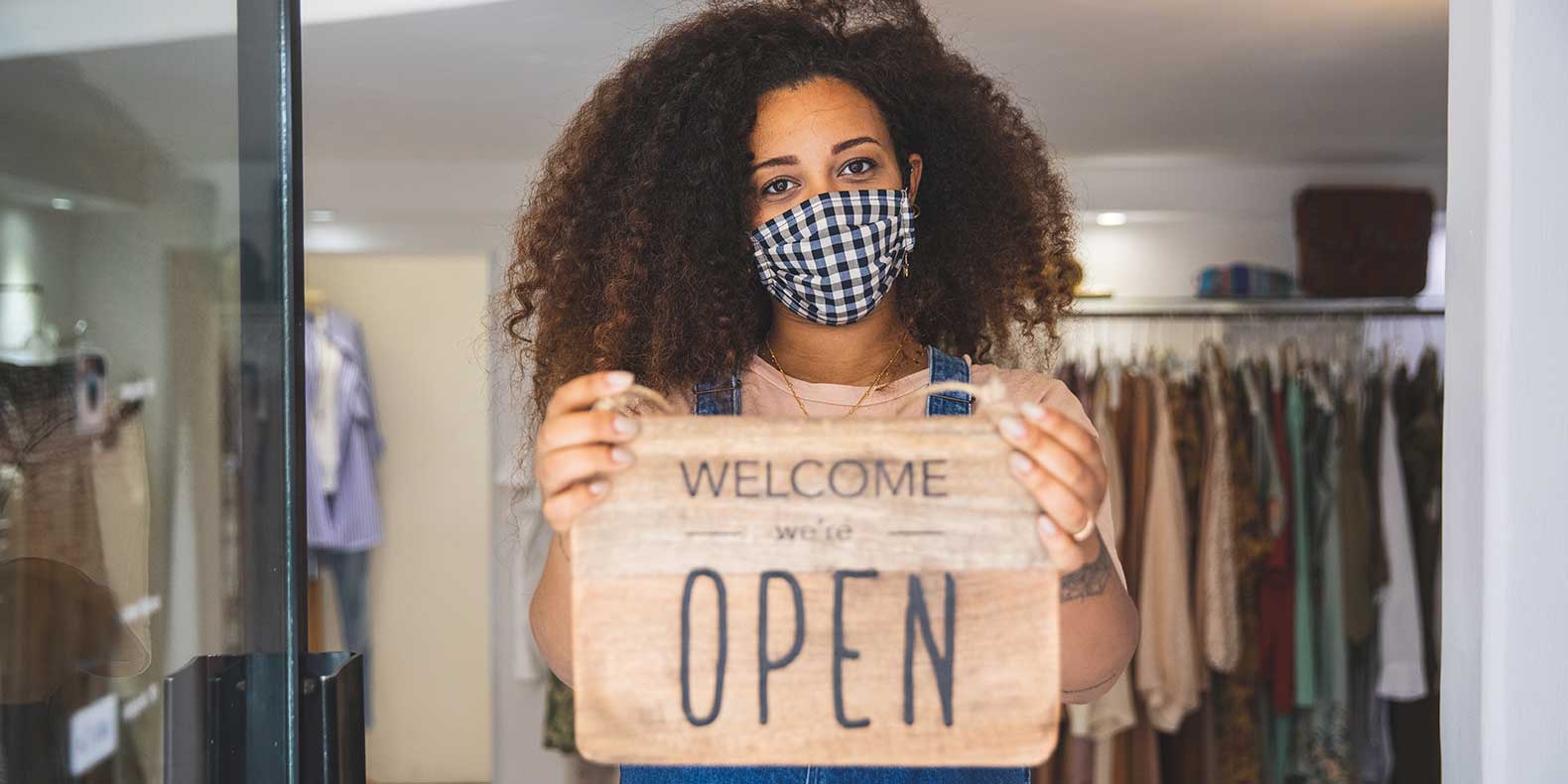This post was originally published on September 27, 2018 and has been updated for accuracy and comprehensiveness.
As a business owner and employer, you’re accountable for more than just profits—you’re responsible for your employees’ safety.
And right now, 54% of workers in the U.S. are concerned about a potentially fatal safety issue at work: contracting COVID-19. Additionally, more than half of U.S. workers are seeking safety measures from their employers before they would feel comfortable returning to work.
And there are more safety risks that employers need to consider outside of COVID-19, too. To address these concerns, we highlight some workplace threats and how security equipment can be used to increase employee safety.
1. COVID-19
Employees are generally concerned about the safety of their workplaces with regard to COVID-19, with 70% of Americans citing something that would prevent them from returning to the office.
PwC also reported on workers’ preferred safety measures. According to a survey, the top answers included:
- Provide personal protective equipment, such as masks (56%)
- Provide notification assurances if a coworker tests positive (51%)
- Require customers to follow safety and hygiene practices (51%)
- Provide assurances about cleanliness and disinfecting procedures (50%)
Additional safety measures for re-entry to the workplace include:
- Occupancy management: Leverage video analytics and real-time information to estimate the number of employees present and safely manage office space.
- Temperature measurement: Use thermal cameras to detect elevated body temperatures.
- Contactless entry: Install non-contact door releases, like those that use smartphone apps, to reduce touching shared surfaces.
- Access control: Use access control technology, like keycards or biometric readers, to let employees move throughout the building without touching shared surfaces. This also supports contact tracing in case someone becomes ill.
- Site reporting: Leverage your security system dashboard for open/close status by site or enterprise, access security reports and more. Also, track and report on activity from environmental sensors and controlled areas like receiving docks and storage rooms.
- Video monitoring: Look in on your office to verify employees are following safe working rules.
- Smart audio and video: Network-connected speakers and monitors deliver automated, customizable messaging to keep people informed.
2. Natural Disaster Security
Natural disasters, such as storms, extreme weather and fires, can happen unexpectedly, so a workplace emergency plan is a must.
But, you shouldn’t stop there. Take workplace safety a step further with security equipment that will instantly alert you and your employees in the event of a natural disaster. Equipment to consider includes:
- Carbon monoxide detectors: Immediately alert people of the toxic, invisible and unscented gas.
- Fire alarms and smoke detectors: Choose from different types of smoke and fire alarms to alert people in the event of danger.
- Motion sensors and video surveillance: Use cameras and motion sensors to immediately see incidents in any area of your office, like a fire starting in the kitchen.
- Temperature sensors: Extreme cold can freeze pipes and cause floods, so temperature sensors add a layer of protection.
- Water sensors: Get an alert if moisture is detected in your office, which could indicate a burst pipe or a flood.
Additionally, conduct an annual review of your natural disaster emergency plan and review all security features to ensure employees are on the same page.
3. Workplace Violence
In 2018, more than 20,000 injuries were caused by acts of workplace violence. Whether these incidents are internal (employee to employee) or external (customer/intruder to employee), you can take certain actions to improve the overall feeling of security throughout your business.
Consider the following tools to keep your employees safe from physical harm:
- Access control: Controlling who can enter certain parts of the building can help keep employees safe.
- Lights: A well-lit office makes employees feel safer and can discourage acts of violence. Good lighting also helps security cameras capture higher-quality footage to identify perpetrators.
- Panic buttons: Small, discreet buttons summon emergency personnel in the event of a dangerous situation, potentially preventing violence.
- Safety education courses: Educate your staff on how to protect themselves in a violent situation, especially those team members who regularly interact with customers.
- Video surveillance: Not only can the presence of cameras deter violence, high-quality footage can identify perpetrators and provide helpful information for responding to incidents.
In addition to these safeguards, business owners can take workplace security a step further by installing a monitored alarm system that will alert you of specific incidents, even after hours.
4. Cyber Threats
The damages from cybercrime are expected to reach $6 trillion each year by 2021, according to Cybersecurity Ventures.
Cyber attacks may not be the first threats that come to mind when you think about workplace safety, but with data breaches exposing 4.1 billion records in the first half of 2019, cyber security needs to be a top priority.
To limit the risk of a data breach and keep your employees sensitive information safe from cyber attack, consider the following safety practices:
- Information backup: Back up critical employee data in an alternate location, like a cloud-based server.
- Firewalls: Install firewalls and anti-virus software on all work computers.
- Password best practices: Protect all networks and work devices with complex passwords.
- Employee education: Train employees on best practices for cyber security.
- Install upgrades: Upgrade system devices as new versions become available to make it harder for hackers to access your network.
- Virtual private network: Utilize a virtual private network (VPN) when allowing employees to work remotely.
Don’t wait for an emergency to happen before you enact the appropriate safeguards into your workplace. Contact a trusted security vendor to ensure your employees and business are protected.



